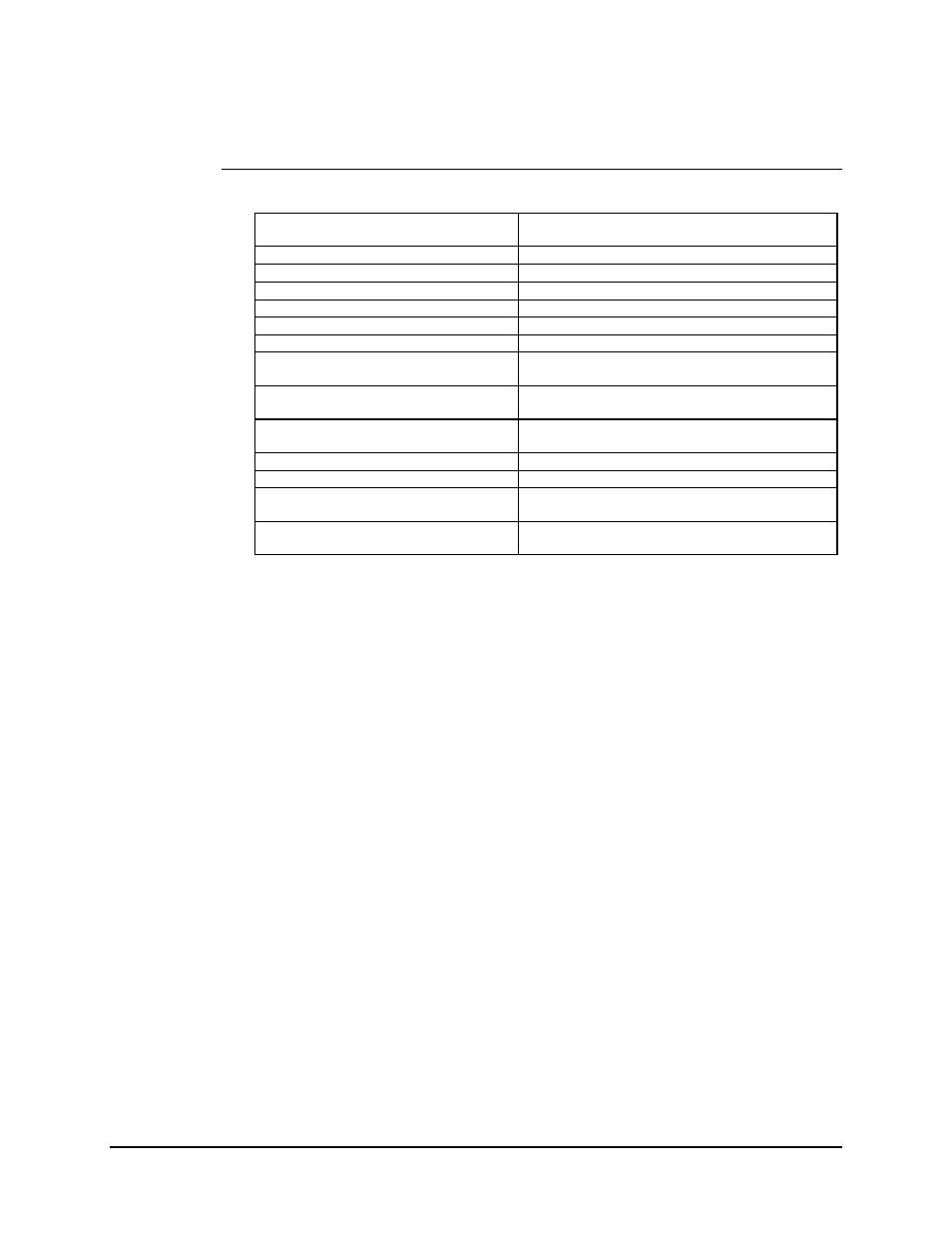3 rs-232-c interface, 2 specification – Comtech EF Data SDM-100A User Manual
Page 138

Theory of Operation
SDM-100A Satellite Modem
4–22
Rev.
0
4.4.2.2 Specification
Circuit Supported
SD, SCT, SCTE, RD, SCR, DSR, RLSD, MC,
MOD FAULT, DEMOD FAULT
Amplitude (RD, SCR, SCT, SD, SCTE)
0.55V pk,
±
20
%
differential, into 100
Ω
Amplitude (CTS, DSR, RLSD)
10,
±
5V into 5000,
± 2000
Ω
Impedance (RD, SCR, SCT)
100,
±
20
Ω
, differential
Impedance (SD, SCTE)
100,
±
10
Ω
, differential
Impedance (RTS)
5000,
±
2000
Ω
, < 2500 pF
DC Offset (RD, SCR, SCT)
± 0.6V max, 1000
Ω
termination to GND
Polarity (SD, SCT, SCTE, RD, SCR)
True when B positive with respect to A
False when A positive with respect to B
Polarity (RTS, CTS, DSR, RLSD)
True when < -3V with respect to ground
False when > +3V with respect to ground
Phasing (SCTE, SCR)
False-to-True transition nominally in center of data
bit
Symmetry (SCT, SCTE, SCR)
50
%,
±
5
%
Frequency Stability (SCT)
±
100 PPM
Modulator Fault
Open collector output, fault is open circuit
15V max, 20 mA current sink max
Demodulator Fault
Open collector output, fault is open circuit
15V max, 20 mA current sink max
4.4.3 RS-232-C Interface
The Electronic Industries Association Standard (EIA) for RS-232-C specifies the
mechanical and electrical characteristics of the interface for connecting Data Terminal
Equipment (DTE) and Data Communications Equipment (DCE). This applies to both
asynchronous and synchronous serial binary data transmission at speeds up to 20 kbit/s,
in full- or half-duplex mode. A functional block diagram of the interface is shown in
Figure 4-8.
RS-232-C is applicable to the unbalanced interchange of data, timing, and control signals
between electronic equipment that has a single common return. It is applicable to private
line applications and service over the public switched network.
DTE refers to business machine hardware such as teleprinters, CRTs, front-end ports,
CPUs, etc. The DTE equipment is always responsible for providing the interconnection
cable, which is terminated in a male, 25-pin connector. The male connector is always
associated with DTE equipment.
DCE refers to the transmission facility, or hardware, such as modems. The DCE is
equipped with a female connector. The female is always associated with DCE equipment.
Electrical and mechanical characteristics of the RS-232-C interface signals are defined in
EIA-STD-RS-232-C. Both electrical and mechanical specifications are summarized in
Sections 4.4.3.1 and 4.4.3.2.